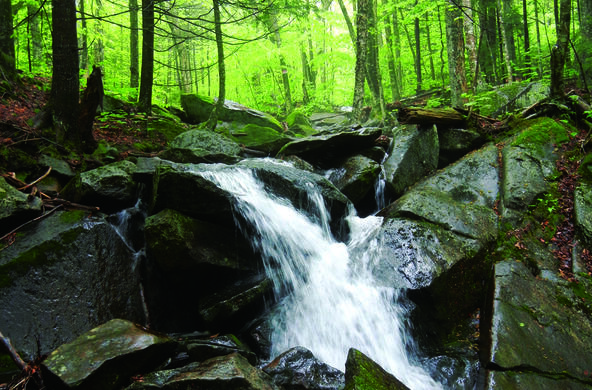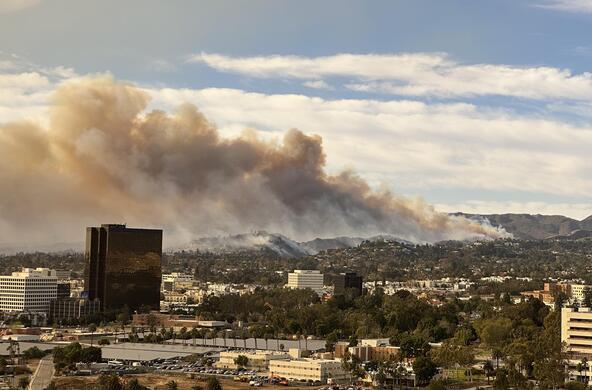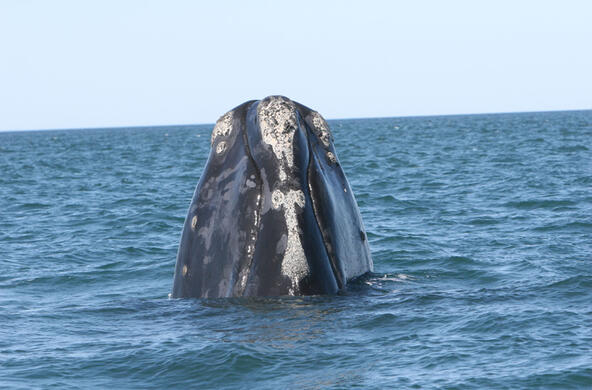The US could be plunged back into an era of toxic acid rain, an environmental problem thought to have been solved decades ago, due to the Donald Trump administration’s rollback of pollution protections, the scientist who discovered the existence of acid rain in North America has warned.
A blitzkrieg launched by Trump’s Environmental Protection Agency (EPA) on clean air and water regulations could revert the US to a time when cities were routinely shrouded in smog and even help usher back acid rain, according to Gene Likens, whose experiments helped identify acidic rainwater in the 1960s.
While drastic improvements in America’s air quality have seemingly consigned acid rain to a problem belonging to a bygone era, Likens said if rules curbing toxic emissions from power plants, cars and trucks are aggressively scaled back, the specter of acid rain could again haunt the US.
“I’m very worried that might happen, it’s certainly not impossible that it could happen,” Likens, 90, told the Guardian. Likens is still involved in a long-term monitoring project, stretching back to 1976, to sample rainwater for acidity but this program has just had its funding cut by the Trump administration.
“I hope we don’t go back to the old days, so these rollbacks are very alarming,” Likens said. “I care about the health of my children and grandchildren, I want them to have clean air to breathe. I care about clean water and clean and healthy soil, I want them to have that too.”
It was in 1963 when Likens, as a young scientist, sampled rainwater in the Hubbard Brook Experimental forest in the White Mountains of New Hampshire and found that it was 100 times more acidic than expected. “That was really an ‘a-ha!’ moment that led us to question what was happening,” he said.
Years of subsequent study by Likens and other scientists ascertained that pollution wafting from coal-fired power plants in the American midwest was being transported by the wind, primarily to the eastern US and Canada. Sulfur dioxide and nitrogen oxides in the pollution reacted with water and oxygen to form sulfuric and nitric acids, combining with water to fall to the ground as acid rain.
By 1980, the average rainfall in the US was 10 times more acidic than normal, with a devastating environmental impact. Lakes and streams became too acidic to support fish and amphibians, nutrients were stripped from soil and the rain damaged plants, trees and even buildings.
A national outcry about acid rain, with newspaper cartoonists depicting people’s umbrellas dissolving and mounting evidence presented by Likens and others in public talks eventually spurred political action.
In 1990, an update to the Clean Air Act targeting acid rain by reducing power plant pollution was passed resoundingly by Congress and signed by President George HW Bush, a Republican. “Every city in America should have clean air,” Bush said as he signed the bill. “With this legislation I firmly believe we will.”
“Acid rain is an example of a major environmental success story – the public spoke up and the politicians listened,” said Likens. Recent sampling of rainwater and soils in the White Mountains region shows acidity levels have fallen by 85% since a peak period in the 1970s, although Likens said the soil remains degraded and any return of acid rain to ecosystems in this fragile state would be disastrous.
“If the Trump administration starts releasing controls on emissions we are going to destroy that success story,” he said.
The plan by the EPA to eliminate or weaken 31 regulations, a move called a “dagger straight into the heart of the climate change religion” by the agency’s administrator, Lee Zeldin, risks many thousands of extra deaths and a litany of heart, lung and other illnesses, according to the EPA’s own estimates of the rules’ benefits.
However, the exact scale of the rollbacks will probably take several years and various court battles to become fully apparent. The US, too, is a very different country from the one before the EPA’s foundation in 1970, when rampant air pollution blotted out the skies in cities such as New York and Los Angeles and rivers were so polluted they caught fire.
Major air pollutants have plummeted in recent decades, due to regulations as well as technological upgrades to power plants and vehicle catalytic converters. Coal, meanwhile, has declined as a power source in favor of cleaner-burning gas and renewables, although Trump has sought to stymie clean energy and help resurrect coal, the dirtiest of fossil fuels.
“I don’t think it’s likely we will see acid rain again because I don’t think there will be a comeback for coal – the main beneficiary of a relaxation in regulations will probably be gas,” said William Reilly, who was EPA administrator in 1990 when the federal action on acid rain was taken.
Reilly said the Clean Air Act amendments were a “home run” victory for public health and a high point in bipartisan cooperation between Republicans and Democrats on the environment. He added the Trump administration was now seeking to take the US in a radically different direction.
“I do think this administration will take us back to a pre-EPA world,” Reilly said. “That will mean unbreathable air, places where there is pollution that you can see, rivers that burn. That is what it was like before and that is what it could be like again if enforcement is cut back.”
Other scientists said a return of acid rain was possible, although it would be gradual rather than immediate. “It’s not like you’ll wake up tomorrow and it will be 1975 in terms of acid rain but we could move in that direction,” said Richard Peltier, an environmental scientist at the University of Massachusetts.
“It would take a number of years but why would we want to do that? It’s frustrating because we know improved air quality is good for the public. There is a viewpoint now that scientists are the bad guys, that the science is corrupt – things that just aren’t true.”
Several of the rules targeted for reversal by Trump’s EPA are aimed at slashing large amounts of sulfur dioxide, among other pollutants, such as standards around coal plant emissions. “We aren’t sure how far back Mr Zeldin is thinking of taking this,” said Murray McBride, a crop and soil scientist at Cornell University. “It would take a dramatic rollback to allow that much sulphur dioxide, but it’s possible.”
After alerting Americans to the dangers of acid rain, Likens founded the Institute of Ecosystem Studies (now the Cary Institute of Ecosystem Studies) to conduct further research.
At Cornell University he then set up a separate monitoring system, near New York’s Finger Lakes, which has been running since 1976 but had its funding cut this month by the National Oceanic and Atmospheric Administration (Noaa) as part of a Trump administration effort to shrink the size of government.
“There was no explanation given why they cut the funding and I’m not sure if we can keep the project going,” said Likens, who conducts this work himself alongside two technicians. “If we don’t have the funding for research to look at what’s happening, we are just blind. It’s an awful way for the country to go.”
Likens continues to conduct lectures, often to people who were not born when acid rain was a major problem in the US. “I try to explain to them that this was one of the few environmental success stories that we have,” he said. “To see that get turned around is just sad. It makes me extremely sad.”
An EPA spokesperson did not answer questions about a potential return of acid rain or how the agency will ensure more people will not become sick or die because of the regulatory rollbacks.
“The US can protect the environment and grow the economy at the same time,” the spokesperson said, adding that the rollbacks were “the greatest and most consequential day of deregulation in American history”.
“This is a very important change from the previous administration’s attempts to shut down American energy and make our citizens more reliant on foreign fossil fuels, resulting in worse environmental outcomes globally, billions in fresh funding to many of our nation’s adversaries at the expense to all Americans, and economic pain on those who can least afford it.”






